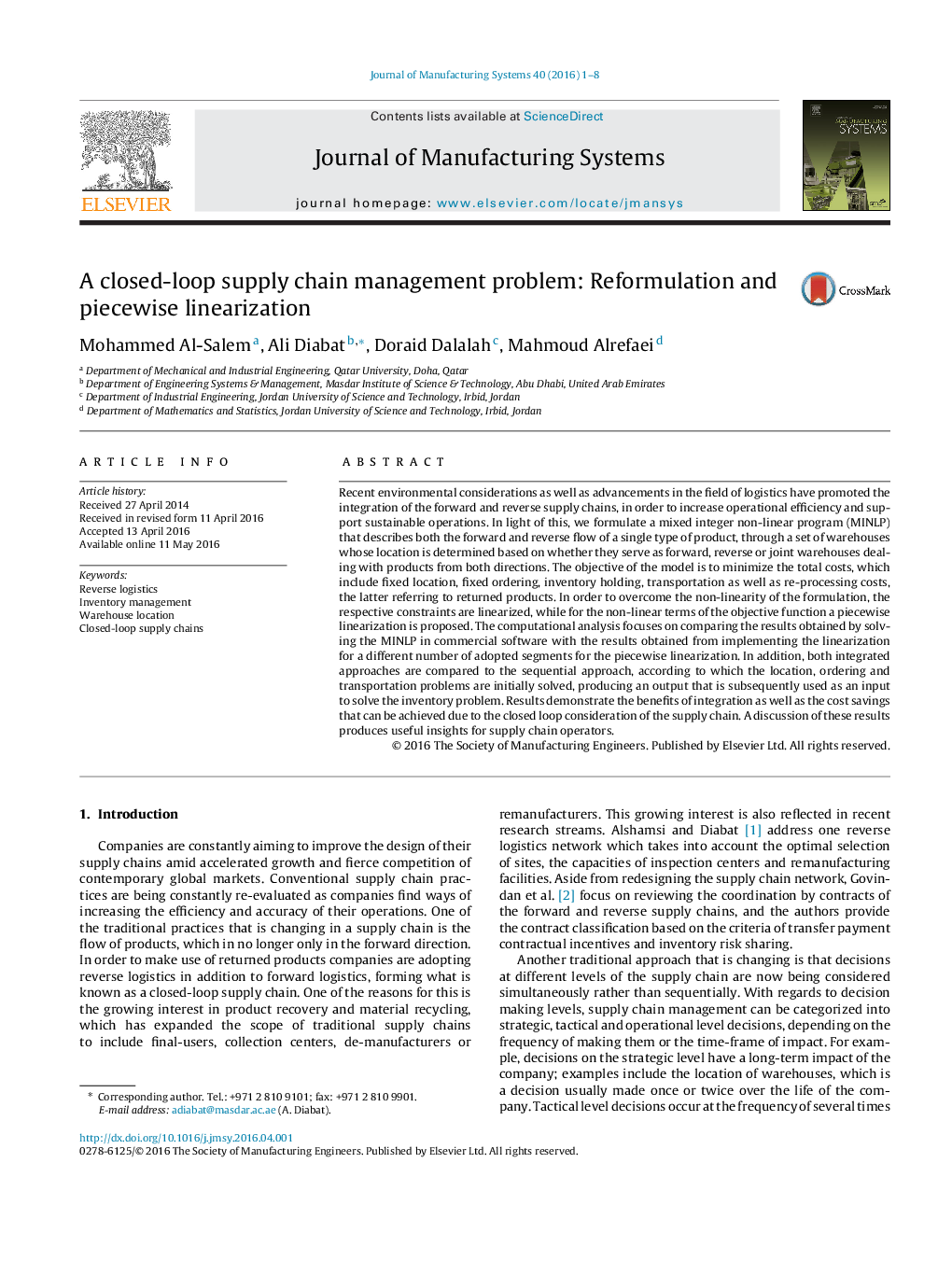| Article ID | Journal | Published Year | Pages | File Type |
|---|---|---|---|---|
| 1697349 | Journal of Manufacturing Systems | 2016 | 8 Pages |
•A closed-loop inventory-location problem is developed.•The model is formulated as an MINLP that is not solvable using commercial solvers like CPLEX.•The problem reformulated and piece-wise linearization is used.•The new model is an MIP that is solvable using CPLEX.•Numerical results demonstrate the efficiency and the accuracy of the approach.•Managerial insights are provided to show the practical value of the integration.
Recent environmental considerations as well as advancements in the field of logistics have promoted the integration of the forward and reverse supply chains, in order to increase operational efficiency and support sustainable operations. In light of this, we formulate a mixed integer non-linear program (MINLP) that describes both the forward and reverse flow of a single type of product, through a set of warehouses whose location is determined based on whether they serve as forward, reverse or joint warehouses dealing with products from both directions. The objective of the model is to minimize the total costs, which include fixed location, fixed ordering, inventory holding, transportation as well as re-processing costs, the latter referring to returned products. In order to overcome the non-linearity of the formulation, the respective constraints are linearized, while for the non-linear terms of the objective function a piecewise linearization is proposed. The computational analysis focuses on comparing the results obtained by solving the MINLP in commercial software with the results obtained from implementing the linearization for a different number of adopted segments for the piecewise linearization. In addition, both integrated approaches are compared to the sequential approach, according to which the location, ordering and transportation problems are initially solved, producing an output that is subsequently used as an input to solve the inventory problem. Results demonstrate the benefits of integration as well as the cost savings that can be achieved due to the closed loop consideration of the supply chain. A discussion of these results produces useful insights for supply chain operators.
